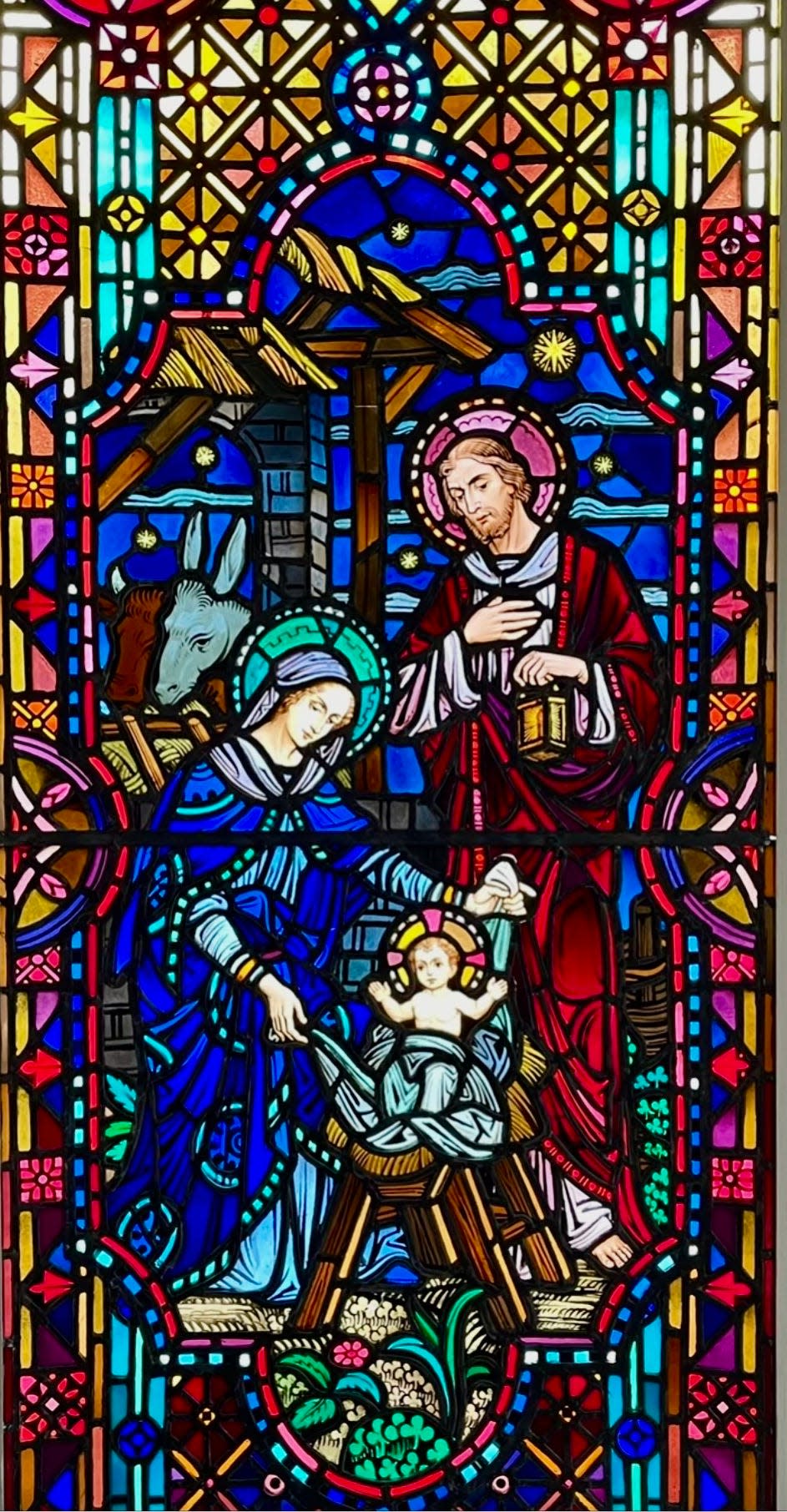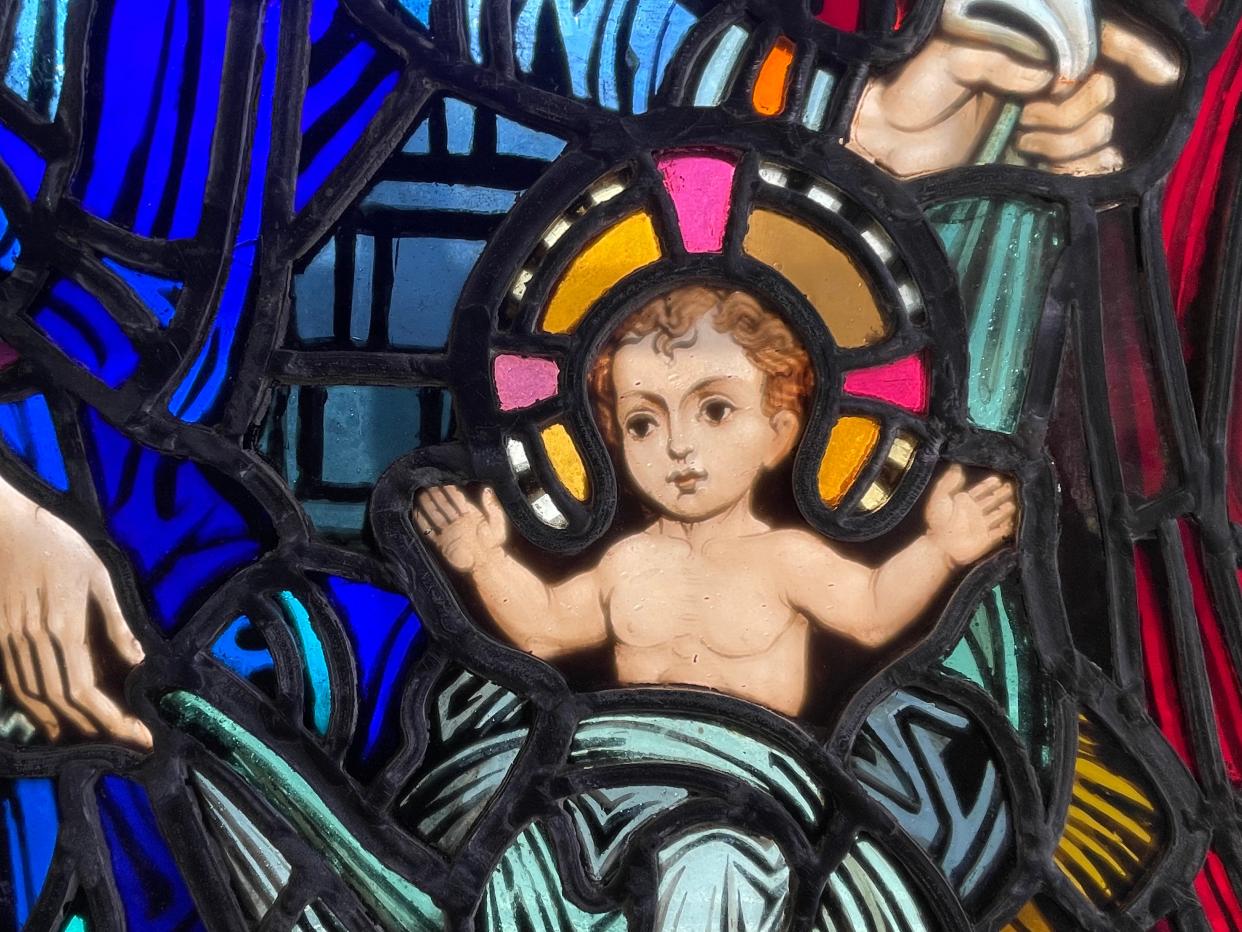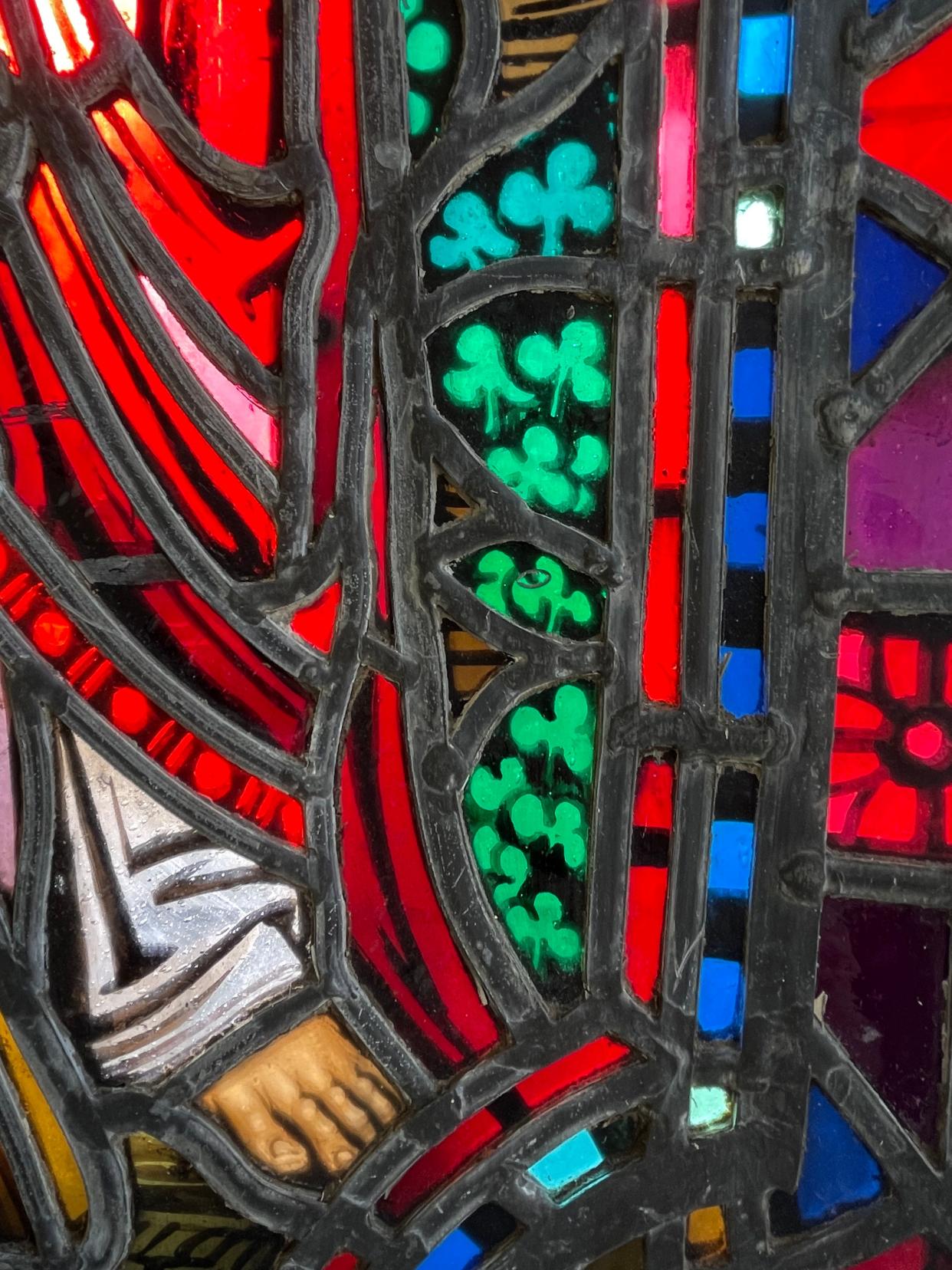Pineville artist gifts St. Rita with 100-year-old stained glass window from German church

Donna Barron always felt like the caretaker of this stained-glass window with the Nativity scene and not really its owner. Even though this window, estimated to be over 100 years old, was displayed in her Pineville home, she always knew she wasn't going to keep it.
After safeguarding the window for about 15-18 years, she is giving the window, which originally came from a German church, to St. Rita Catholic Church in Alexandria where it will start a new chapter in its long history as part of a new youth center.
“It’s a religious artifact and it’s been prayed under so much. It has to go back to some type of religious place,” said Barron.
“I know a little bit about stained glass and this type,” said local historian Mike Wynne who is helping Barron research its history. “And this is 1890s, no later than 1910. It could be a little earlier. But, sort of late 1800s would be the the best focal point until we can possibly – possibly - identify the church.”
The stained glass has slid slightly in its encasement but is in otherwise great shape, said Wynne. Barron added that there are there are few places that have small, minute cracks but Wynne told her it would be surprising if it didn’t have any.
“It traveled so far - to Pineville,” said Father Anthony “Raj” Dharmaraj, pastor of St. Rita.
Wynne brought Dharmaraj and Father Joshua Burch, associate pastor of St. Rita, to Barron’s house to meet her and see the window she is gifting the church.
“I’m so happy for you all to have it and to put it in its place of glory,” Barron told Dharmaraj and Burch.
Dharmaraj told her the window will be placed in a chapel inside the new youth center where youths can pray.
To get the window safely to the church from Pineville to its new home in Alexandria, Wynne said that the Bishop Charles P. Greco Council No. 1134 of the Knights of Columbus figure out the logistics and best transportation options.
"This thing has such a story to tell,” she said, gazing at it as the sun brilliantly illuminated pieces of colored glass. “In full light it's amazing.”
Barron told Dharmaraj and Burch that she is excited to see it in its new home, starting a new chapter in its history.
“What travels did it make to get to this point? That’s what’s so interesting,” she said.

Her part in its story began at a benefit for the American Cancer Society.
“They had antique dealers. They had all kinds of different things,” she said.
One of them, who was from out of town, had the window with them and when she saw it, Barron, who is an artist, was just amazed.
“There's well over a 1,000 little pieces in it," she said, adding that she tried counting all of them but there are just too many.
"It could not be more intricate," said Wynne. "You could not have pieces even smaller than that."
Barron also admires the detail in the faces of the Infant Jesus, Joseph and particularly Mary.
"Sometimes you will see older art like this, and a woman's face looks manly. Have you noticed that? Sculptures and everything, the faces don't look really feminine and her face is even feminine,” she said. Even the Infant Jesus' face looks like it belongs to a baby.
“The baby's face doesn't look old, because you see that a lot too, like the face of a baby looks like a 10-year-old,” said Barron.
The dealer had told that it was once in a church in Rüdesheim am Rhein, Germany. During World War I, all the church’s stained glass windows were removed.
“He said they were afraid to leave the glass in the churches, so they took them out and they were divided between the different parishioners for safekeeping,” she said.
She later read that during the next war, World War II, many of the churches in Germany were destroyed.
“So, I thought this made it out prior to that and who knows where it's been,” said Barron.
“I do believe that's how a number of our churches got some of their stained glass because we have quite a bit of German stained glass in different churches around the Diocese (of Alexandria),” said Burch. “Which is really cool. If I'm not mistaken, the Minor Basilica in Natchitoches has a lot of German stained glass.”
At the auction, Barron didn't intend to purchase the window. But unknown to her, her husband did and two months later, surprised her with it on her birthday.
How the dealer came into possession of the window and how it ended up in Louisiana is unknown to her.
With the information provided by Barron, Wynne is researching Rüdesheim am Rhein to see if he can find a Catholic church that exists there, or if a church was destroyed in either World War I or World War II.
“I sent a photo to it to an antique dealer after I got it and he said he definitely feels like it came from a Catholic Church because they used to put the clover in for the Trinity. And the quatrefoils. These are quatrefoils,” she said pointing out the flower-like designs. “The quatrefoils signify Matthew, Mark, Luke and John."
In the Nativity scene, the Infant Jesus is sitting up, chest exposed and his arms lifted up in prayer. Wynne said he didn’t think he had ever seen a Nativity scene where so much of the Infant Jesus’ chest is exposed.

“He’s maintaining the Orans Posture,” explained Burch. “The Incarnation, the Nativity is the climax of all salvation history. So, this is the moment that really ties in all of the prophets foretelling this event, as well as sort of prefiguring, if not foreshadowing, His eventual death upon the Cross. It’s really an evocative image.”
The Infant Jesus’ Orans Posture gives more significance to his priestly role, said Burch. Many times, the Infant Jesus’ hand will be depicted in blessing. The Orans Posture is limited to the priest.
“And it means he’s standing in the Person of Christ in order to mimic the sacrifice, the spreading out of the arms upon the Cross," said Burch. "It’s the gesture of prayer. It’s the universal symbol to everyone that we are in a time of prayer, so our hearts are supposed to be disposed for prayer at that moment.”
Among the other details Barron pointed out are the tiny bubbles. She put her finger on one of the pieces where she could feel them.
"And then also, this wavy glass was very significant," said Barron.
Details like that can help determine the age of the window, said Wynne.
“The bubbles were able to be removed from glass manufacturing about 1910,” he said.
“Something that’s very unique, also, is the halos around Mary and Joseph,” said Burch, noting that in this stained glass, Mary’s halo is a hue of green while Joseph’s is in a reddish one. “Because a lot of the stained glass that I've seen, they go typically to the gold.”
"You talked about counting the panes of glass,” Wynne told Barron. “But actually, counting the shades of colors, I think would be a problem, trying to find all the different colors.”
In Wynne’s opinion, this window is “the perfect piece of religious art.”
“This really is as magnificent a piece of stained glass of its time as you can find with one of the greatest, greatest, greatest symbols of all, the Nativity,” he said.
Burch said that Barron’s generous gift to the church was going to inspire many people.
“I know I plan on spending a lot of time in front of it, just sort of reflecting on the mystery of the Nativity,” he said
“It’s really a Christmas miracle. It’s coming at this time of the year," said Wynne. "There’s a need for it. There’s a want for it. It’s a win-win-win situation."
“Nothing happens by coincidence. It’s always providence. All is providence,” said Burch.
This article originally appeared on Alexandria Town Talk: Pineville artist gifts St. Rita with 100-year-old stained glass window from German church
